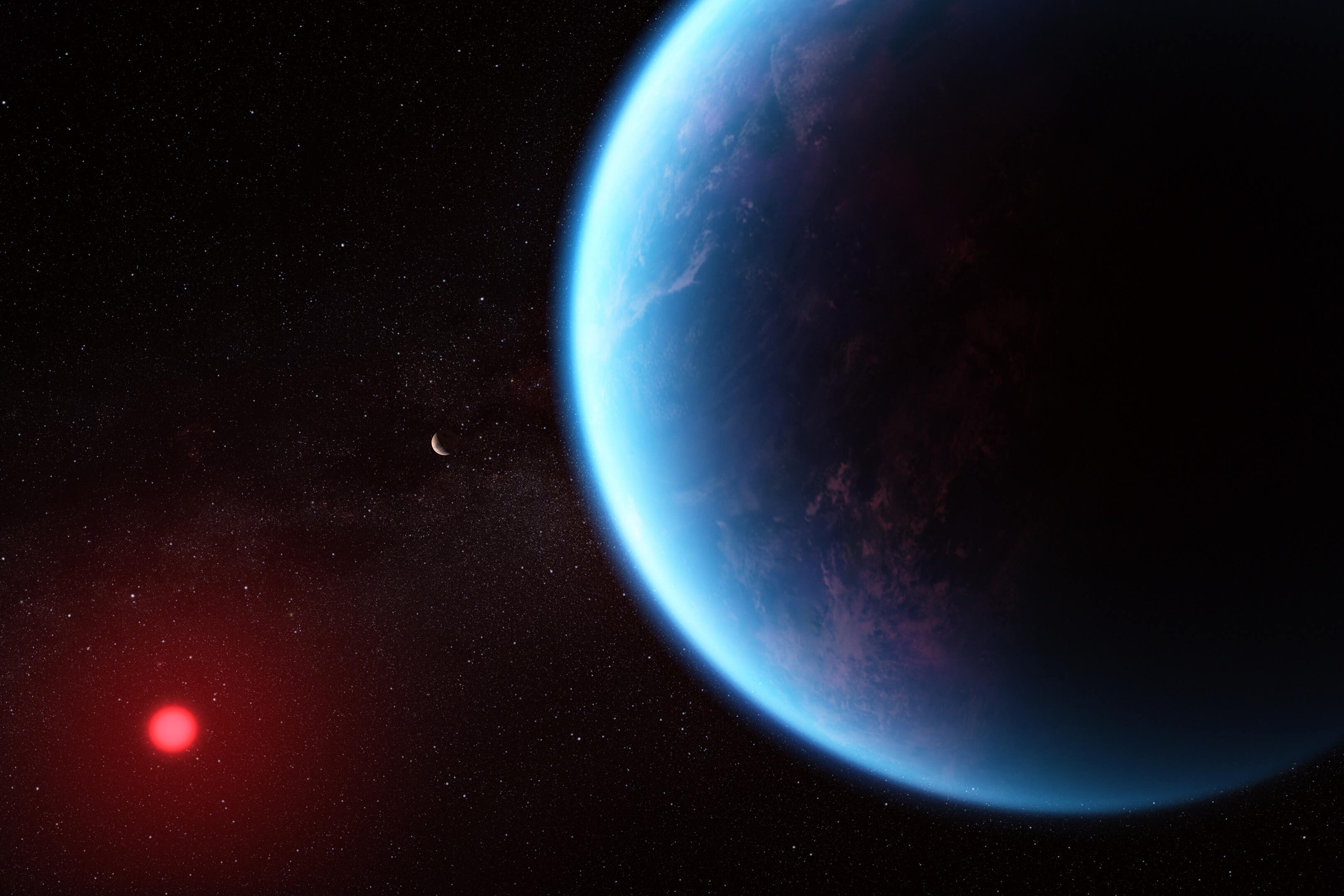Molecule ‘that could hint at life’ and carbon dioxide found on exoplanet
The exoplanet K2-18 b – which is outside the solar system – is 8.6 times as massive as Earth.

Astronomers have for the first time discovered carbon-based molecules – and a molecule hinting at the possibility of life – in the atmosphere of an exoplanet in the habitable zone.
The exoplanet K2-18 b – which is outside the solar system – is 8.6 times as massive as Earth, and has carbon-bearing molecules including methane and carbon dioxide.
Experts said the discovery adds to recent studies suggesting it could be a Hycean exoplanet – one with the potential to possess a hydrogen-rich atmosphere and a water ocean-covered surface – advancing the search for habitable planets and life.
Nikku Madhusudhan, an astronomer at the University of Cambridge and lead author of the paper, said: “Our findings underscore the importance of considering diverse habitable environments in the search for life elsewhere.
“Traditionally, the search for life on exoplanets has focused primarily on smaller rocky planets, but the larger Hycean worlds are significantly more conducive to atmospheric observations.”
Our ultimate goal is the identification of life on a habitable exoplanet, which would transform our understanding of our place in the universe
The abundance of methane and carbon dioxide, and shortage of ammonia, support the hypothesis that there may be an ocean underneath a hydrogen-rich atmosphere on K2-18 b.
The initial James Webb Space Telescope (JWST) observations also provided possible detection of a molecule called dimethyl sulphide (DMS).
On Earth, this is only produced by life, and the bulk of the DMS in Earth’s atmosphere is emitted from phytoplankton in marine environments.
While the signs of this molecule are tentative and require further confirmation through additional observations, the researchers say K2-18 b and other Hycean planets could be our best chance to find life outside our solar system.
Prof Madhusudhan added: “More observations are needed to determine whether it is in fact DMS that we’re seeing.
“The possibility of DMS in the atmosphere is highly promising, but we are planning to take another look to robustly establish its presence.”
Co-author Dr Subi Sarkar, of Cardiff University’s School of Physics and Astronomy, said: “Although this kind of planet does not exist in our solar system, sub-Neptunes are the most common type of planet known so far in the galaxy.
“With the help of JWST’s near infra-red NIRISS and NIRSpec instruments, we have obtained the most detailed spectrum of a habitable-zone sub-Neptune to date.”
For a planet, the habitable zone is the distance from a star that allows liquid water to persist on its surface.
The team’s next round of Webb observations will use JWST’s Mid-InfraRed Instrument to further validate the results.
Prof Madhusudhan added: “Our ultimate goal is the identification of life on a habitable exoplanet, which would transform our understanding of our place in the universe.
“Our findings are a promising first step in this direction.”
The findings are published in The Astrophysical Journal Letters.